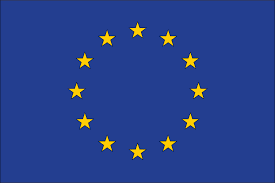Chemycal has been acquired by 3E
Learn MoreChemycal has been acquired by 3E
Learn MoreDiscover how Chemycal PRO helps you boosting your regulatory monitoring:

The Scientific Committee on Consumer Safety (SCCS) has published the 12th revision of the "Notes of Guidance for the Testing of Cosmetic Ingredients and Their Safety Evaluation." This updated guidance aims to ensure the safety of cosmetic products under Regulation (EC) No 1223/2009, which has been in effect since July 2013.
The SCCS plays a crucial role in evaluating the safety of ingredients that may pose risks to human health, such as colorants, preservatives, UV-filters, and hair dyes. Safety evaluations for these substances are conducted at the Commission level, and they are addressed in the Annexes of Regulation (EC) No 1223/2009.
The safety evaluation process takes into account all available scientific data, including physical and chemical properties, exposure routes, in silico modeling, chemical categories, in vitro and ex vivo experimental results, and animal studies conducted prior to the testing and marketing bans. Notably, since 2004, animal testing for finished cosmetic products has been banned, while testing on ingredients or combinations of ingredients has been banned since 2009. Marketing bans for specific health effects came into effect in 2013, regardless of the availability of alternative non-animal methods.
The updated guidance incorporates the latest validated methods of the 3Rs (Refinement, Reduction, and Replacement) and emphasizes the use of New Approach Methodologies (NAMs) as alternatives to animal testing. The SCCS recognizes the importance of exploring new methodologies, such as Next-Generation Risk Assessment (NGRA), in combination with historical animal data, to achieve a Weight of Evidence (WoE) decision-making approach for the safety evaluation of cosmetic ingredients.
While the "Notes of Guidance" primarily focus on the testing and safety evaluation of cosmetic substances listed in Regulation (EC) No 1223/2009, they may also be useful for other substances intended for cosmetic product incorporation. Although not specifically written for this purpose, the guidance can assist in creating a Product Information File (PIF) for finished cosmetic products, as required by Regulation (EC) No 1223/2009.
It is worth noting that the European Chemicals Agency (ECHA) has the authority to request animal studies, even for substances intended solely for cosmetic use. However, these animal data cannot be used in the cosmetic product safety report (CPSR) or submitted to the SCCS for risk assessment. The SCCS can, however, request access to these studies from ECHA if they deem them relevant to the risk assessment process.
The SCCS emphasizes that the "Notes of Guidance" should not be considered a prescriptive procedure but rather an adaptable approach tailored to individual cases during the safety evaluation of Annex substances. However, if significant deviations from standardized protocols are adopted, applicants must provide scientific justification.
The SCCS intends to revise the "Notes of Guidance" as needed based on scientific advancements in toxicology, validated alternative methods, and legislative changes. This commitment ensures that the evaluation process remains up to date and in line with the latest scientific knowledge.
2013 © MyChemicalMonitoring. ALL Rights Reserved. About Us | Terms and Conditions